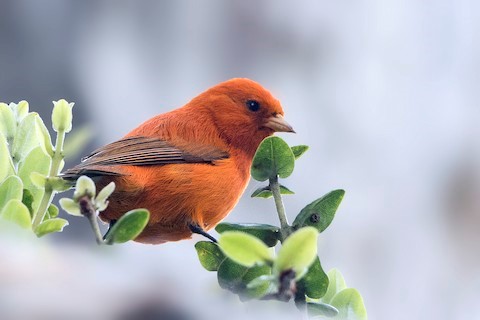Birdfinding.info ⇒ The Hawaii Akepa remains locally common in a few areas, but most are not publicly accessible. It can be found on tours of the restricted Hakalau Forest National Wildlife Refuge. With some effort and luck, it can also be found at the publicly accessible “3-Mile Kipuka” south of Saddle Road where the Pu’u O’o Trail and Powerline Road meet.
Hawaii Akepa
Loxops coccineus
Endemic to the Big Island of Hawaii, where it occurs in native forests between about 1,100 and 2,100 m elevation.
Formerly distributed over most of the island, but by the mid-1900s it had apparently declined and retreated to five discrete areas: (1) Hakalau Forest National Wildlife Refuge on the eastern slopes of Mauna Kea; (2) the kipukas of the Hilo and Upper Waiakea Forest Reserves southeast of Mauna Kea; (3) Ka’u and Kapapala Forest Reserves on the southeastern slopes of Mauna Loa; (4) the southern Kona highlands, on the western slopes of Mauna Loa; and (5) the northern Kona highlands, on the northern slopes of Hualalai.
In the 1970s the total population was estimated at approximately 14,000, and it appears to have remained stable since then. The largest subpopulations are in Hakalau Forest (>50%) and Ka’u and Kapapala Forest Reserves (~35%), while those of the Kona highlands are small and at risk of disappearing.
Identification
Definitive male plumage is all-red, varying from pale orange-red to vermilion.
Second-year males turn red in stages, sometimes appearing mostly yellowish-orange or showing irregular red patches.
Females and first-year males are dull-olive above and pale-gray or yellowish below.
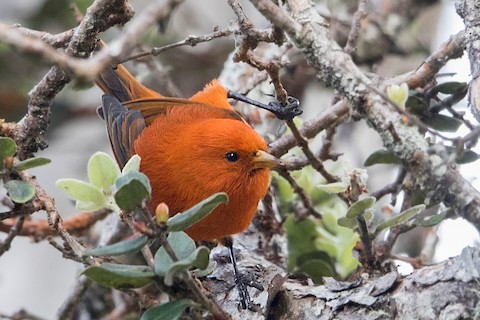
Hawaii Akepa, male. (Hakalau Forest National Wildlife Refuge, Big Island, Hawaii; September 17, 2018.) © Bradley Hacker
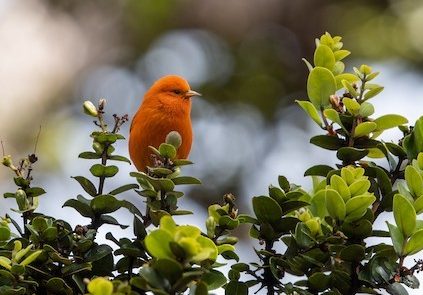
Hawaii Akepa, male. (Hakalau Forest National Wildlife Refuge, Big Island, Hawaii; January 7, 2020.) © William Higgins
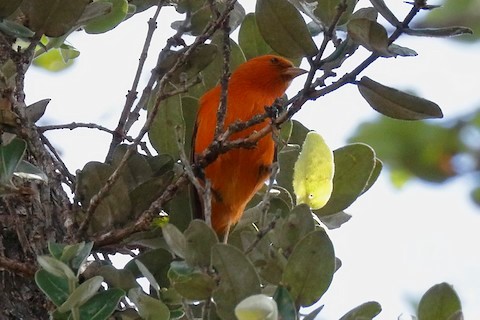
Hawaii Akepa, male. (Hakalau Forest National Wildlife Refuge, Big Island, Hawaii; October 21, 2017.) © Sharif Uddin
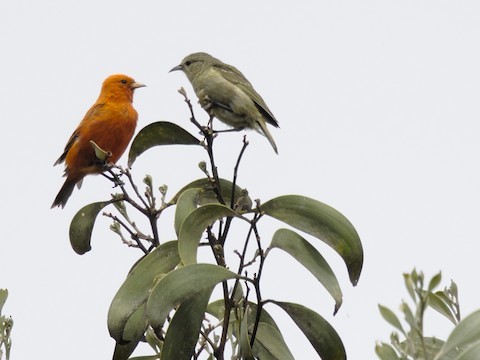
Hawaii Akepa, male and female. (Hakalau Forest National Wildlife Refuge, Big Island, Hawaii; July 10, 2018.) © Mark Scheel
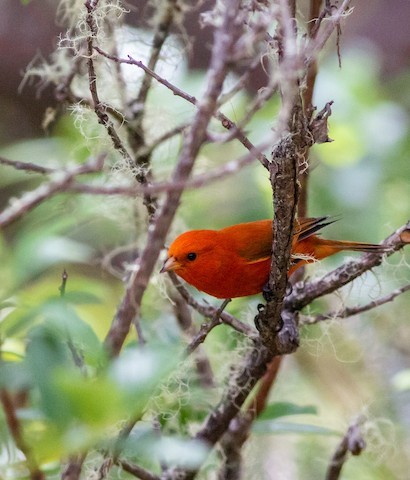
Hawaii Akepa, male. (Hakalau Forest National Wildlife Refuge, Big Island, Hawaii; April 2, 2019.) © David Brock
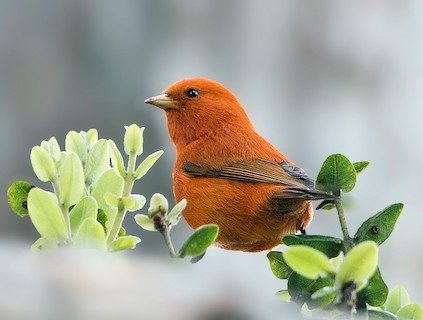
Hawaii Akepa, male. (Hakalau Forest National Wildlife Refuge, Big Island, Hawaii; September 17, 2018.) © Bradley Hacker

Hawaii Akepa, male. (Hakalau Forest National Wildlife Refuge, Big Island, Hawaii; November 11, 2016.) © Bob & Bettina Arrigoni
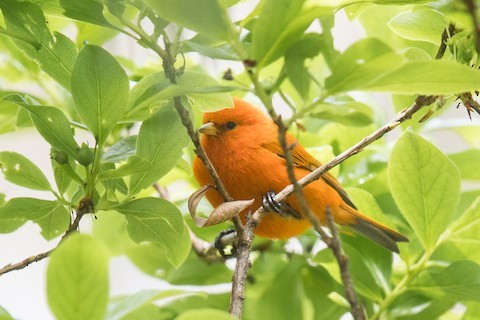
Hawaii Akepa, male. (Hakalau Forest National Wildlife Refuge, Big Island, Hawaii; January 7, 2020.) © William Higgins

Hawaii Akepa, male. (Hakalau Forest National Wildlife Refuge, Big Island, Hawaii; August 9, 2017.) © Ruben Stoll

Hawaii Akepa, male. (Hakalau Forest National Wildlife Refuge, Big Island, Hawaii; July 2, 2016.) © Jacob Drucker
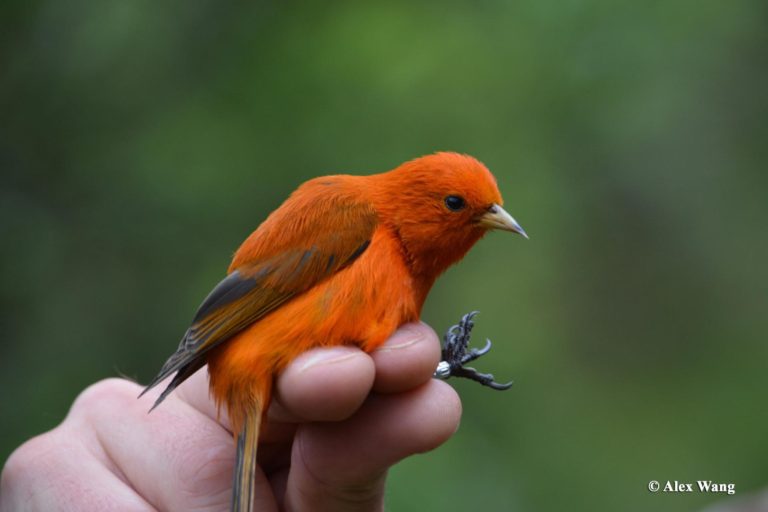
Hawaii Akepa, male. (Hakalau Forest National Wildlife Refuge, Big Island, Hawaii; April 6, 2014.) © Alex Wang

Hawaii Akepa, male. (Hakalau Forest National Wildlife Refuge, Big Island, Hawaii; April 6, 2014.) © Alex Wang
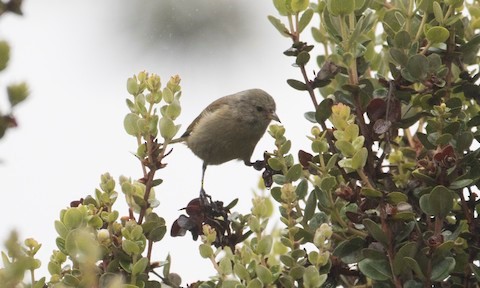
Hawaii Akepa, female. (Hakalau Forest National Wildlife Refuge, Big Island, Hawaii; September 20, 2017.) © Brian Sullivan
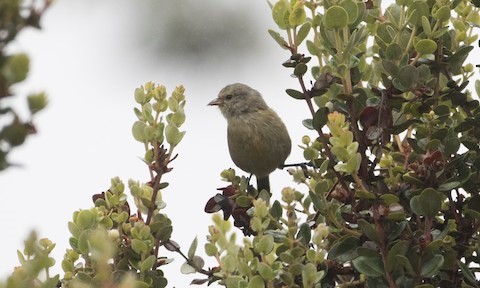
Hawaii Akepa, female. (Hakalau Forest National Wildlife Refuge, Big Island, Hawaii; September 20, 2017.) © Brian Sullivan
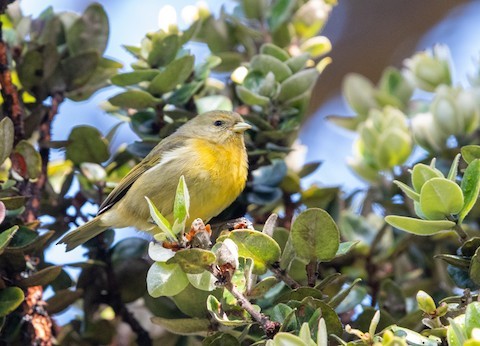
Hawaii Akepa, immature male. (Hakalau Forest National Wildlife Refuge, Big Island, Hawaii; January 7, 2020.) © William Higgins
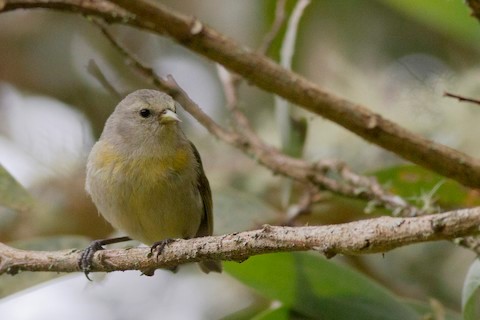
Hawaii Akepa, immature male. (Hakalau Forest National Wildlife Refuge, Big Island, Hawaii; March 18, 2016.) © John Puschock
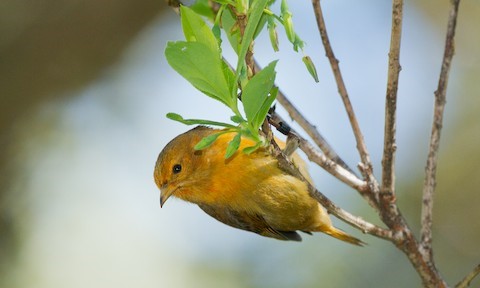
Hawaii Akepa, likely second-year male. (Hakalau Forest National Wildlife Refuge, Big Island, Hawaii; March 13, 2014.) © Eric VanderWerf
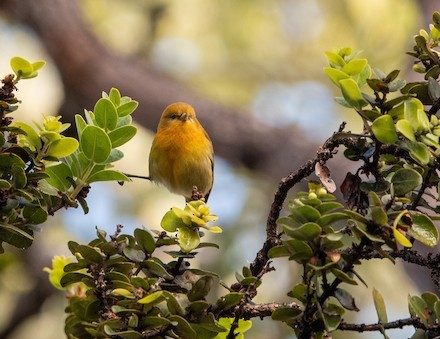
Hawaii Akepa, immature male. (Hakalau Forest National Wildlife Refuge, Big Island, Hawaii; January 7, 2020.) © William Higgins
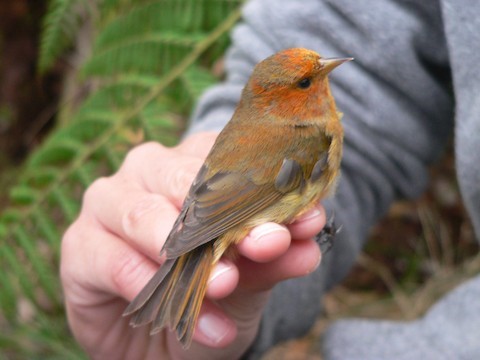
Hawaii Akepa, second-year male. (Hakalau Forest National Wildlife Refuge, Big Island, Hawaii; March 15, 2012.) © Nicholas Sly

Hawaii Akepa, female. (Hakalau Forest National Wildlife Refuge, Big Island, Hawaii; April 13, 2012.) © Nicholas Sly
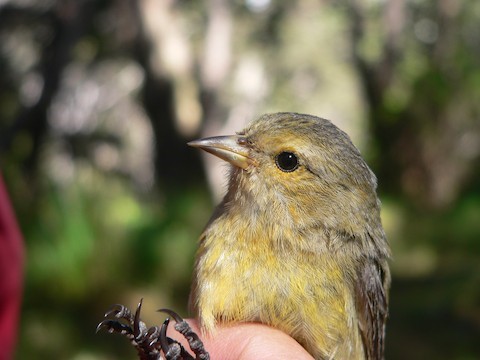
Hawaii Akepa, female or immature male. (Hakalau Forest National Wildlife Refuge, Big Island, Hawaii; March 14, 2012.) © Nicholas Sly

Hawaii Akepa, second-year male. (Hakalau Forest National Wildlife Refuge, Big Island, Hawaii; March 14, 2012.) © Nicholas Sly
Notes
Monotypic species. Traditionally considered conspecific with Oahu and Maui Akepas (both extinct), but they differed in coloration. Mitochondrial DNA analysis has enabled the conclusion that they were distinct at the species level.
IUCN Red List Status: Endangered.
References
BirdLife International. 2016. Loxops coccineus. The IUCN Red List of Threatened Species 2016: e.T103823991A94685811. https://dx.doi.org/10.2305/IUCN.UK.2016-3.RLTS.T103823991A94685811.en. (Accessed May 15, 2020.)
eBird. 2020. eBird: An online database of bird distribution and abundance. Cornell Lab of Ornithology, Ithaca, N.Y. http://www.ebird.org. (Accessed May 15, 2020.)
Pratt, H.D. 2005. The Hawaiian Honeycreepers: Drepanidinae. Oxford University Press.
Pratt, H.D. 2020. Hawaii Akepa (Loxops coccineus). In Handbook of the Birds of the World Alive (J. del Hoyo, A. Elliott, J. Sargatal, D.A. Christie, and E. de Juana, eds.). Lynx Edicions, Barcelona. https://www.hbw.com/node/61439. (Accessed May 9, 2020.)
Pyle, R.L., and P. Pyle. 2017. The Birds of the Hawaiian Islands: Occurrence, History, Distribution, and Status. Version 2 (January 1, 2017). http://hbs.bishopmuseum.org/birds/rlp-monograph/. B.P. Bishop Museum, Honolulu, Hawaii.
Xeno-Canto. 2020. Hawaii Akepa – Loxops coccineus. https://www.xeno-canto.org/species/Loxops-coccineus. (Accessed May 15, 2020.)
